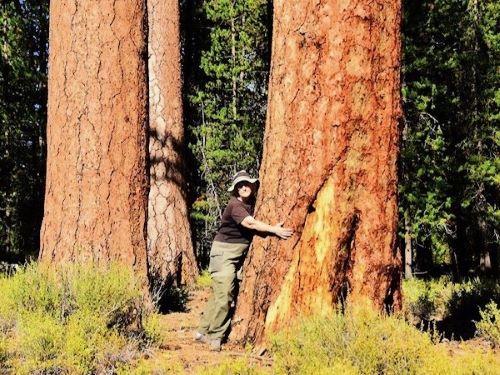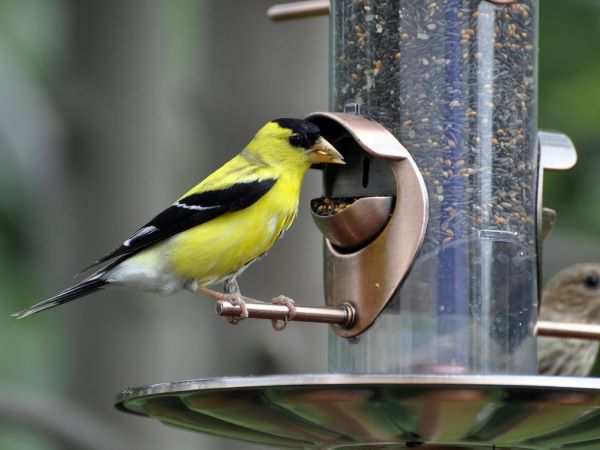Our Habitat Haven volunteers have begun site visits and been enthusiastically received. At the start…
 In a research study published in July, ravens learned how to get food out of a puzzle box using a stone tool. The next day, when the ravens were given a choice of items to collect, they preferentially selected the stone tools, even when the puzzle box was nowhere in sight. The stones might come in handy later on, when the puzzle box was around. They also learned to trade bottle caps for food. Later, when given a choice between bottle caps and other items (even small food treats), they choose the bottle caps—a fun demonstration that birds are good at planning for the future.
In a research study published in July, ravens learned how to get food out of a puzzle box using a stone tool. The next day, when the ravens were given a choice of items to collect, they preferentially selected the stone tools, even when the puzzle box was nowhere in sight. The stones might come in handy later on, when the puzzle box was around. They also learned to trade bottle caps for food. Later, when given a choice between bottle caps and other items (even small food treats), they choose the bottle caps—a fun demonstration that birds are good at planning for the future.
Like ravens, humans also need to plan for the future. National monuments protect species, biodiversity, and important habitat. But the effectiveness of the protected areas decreases over time, due to encroaching development and shifts in species’ ranges due to climate change. How to plan for the future?
 One way is to expand existing national monuments. This is just what was done with Oregon’s Cascade-Siskiyou National Monument, first designated in 2000. This area is part of the Pacific Flyway, a migratory corridor essential to birds. At the crossroads of four distinct eco-regions, it was created to protect the area’s unique biodiversity. Scientists expressed concerns that the original boundaries were not large enough to preserve the connectivity between species, and that an increase in area development threatened habitat. These concerns, plus evidence indicating that the area was not large enough for species to withstand range shifts due to climate change, prompted an expansion of the monument in 2016. Good planning for the future.
One way is to expand existing national monuments. This is just what was done with Oregon’s Cascade-Siskiyou National Monument, first designated in 2000. This area is part of the Pacific Flyway, a migratory corridor essential to birds. At the crossroads of four distinct eco-regions, it was created to protect the area’s unique biodiversity. Scientists expressed concerns that the original boundaries were not large enough to preserve the connectivity between species, and that an increase in area development threatened habitat. These concerns, plus evidence indicating that the area was not large enough for species to withstand range shifts due to climate change, prompted an expansion of the monument in 2016. Good planning for the future.
This year, the Trump administration ordered a review of our national monuments. A summary of the review recently released to the public contained no details. But the Washington Post reported unreleased documents indicating that the expansion of three monuments, including the Cascade-Siskiyou, would be reversed. Whatever the specifics, there is reason for concern, especially when combined with attempts to weaken protections on other fronts, such as clean water and air rules, and endangered species safeguards. Not planning for the future.
Some myths around the national monuments should be dispelled. No private property was affected by the expansion of the Cascade-Siskiyou National Monument. Monument land is composed of public lands. The designation of national monuments does not cut off public access for fishing, hunting, hiking, birding, kayaking, and other outdoor activities. Increasing the size of the monument has not increased unemployment. According to the Outdoor Industry Association, outdoor recreation generates billions in wages and consumer spending, and provides almost three times more jobs in Oregon than are provided by the timber industry.
Most people recognize the importance of protecting natural areas: they clean the air and protect watersheds, protect pollinators, encourage healthy recreation, mitigate storm damage, sequester carbon, and provide habitat for fish and wildlife. By the government’s own admission, the vast majority of public comments submitted during this national monument review process were “in favor of maintaining existing monuments.” Most people want to protect our natural areas, for themselves and for their children. That’s good planning for the future. Can we follow through?



